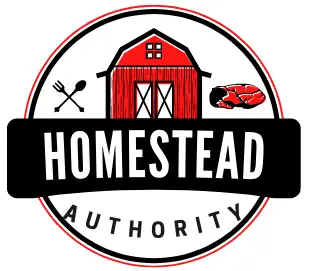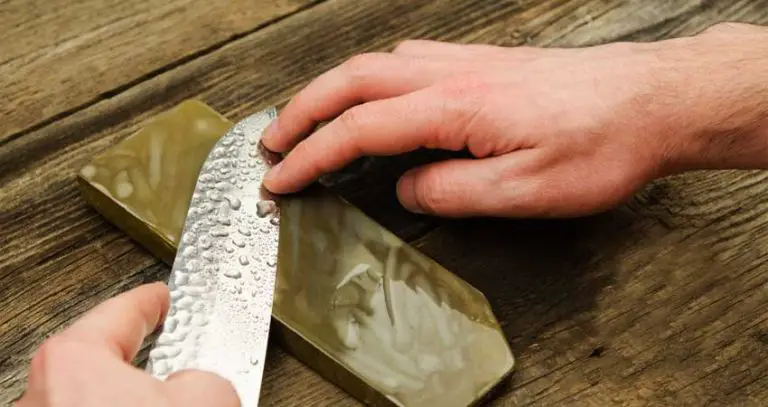Dagger vs. Dirk: What’s the Difference?
Everyone has heard about the classic battle between a dagger and a dirk, but only some understand the subtle differences between the two weapons.
So, what is the difference between dagger vs dirk? The main difference between a dagger and a dirk is in their blade shape. A dagger features a symmetrical blade with dual sharp edges. A dirk, on the other hand, has a thicker spine and a single sharp edge. Dirks are typically longer than daggers and are used as weapons more often than daggers.
This post covers some general differences between daggers and dirks and their advantages and disadvantages. So, continue reading if you want to get more information about the two.
Dagger vs Dirk: Comparison Table
The table below summarizes the key differences between daggers and dirks:
| Feature | Dagger | Dirk |
|---|---|---|
| Usage | Historically used for stabbing or slashing, and some even had serrated edges | Primarily used for thrusting and stabbing in close combat situations |
| Blade Shape | Double-edged from the tip down to halfway/three-quarters of the way through | Single-edged blades with a flat top near the pommel and a gradual curve towards the tip |
| Weight & Balance | Heavier and more weight distributed away from hilt | Most of the weight concentrated near hilt |
| History | Used since ancient times all over world | Only used in Scotland starting in late medieval period up until present day |
What’s The Difference Between A Dirk And A Dagger? Comparing Each Side
Daggers and Dirks are two very similar types of knives, and the untrained eye can look almost identical. However, some key differences between these two weapons should be considered when choosing which suits your needs better.
Usage
Dirks and daggers are both types of knives that have been used for centuries. While they may look similar, there are some key differences between the two.
Historically, dirks were used as weapons by Scottish Highlanders and were often carried as part of traditional dress. They were primarily used for thrusting and stabbing, and their pointed shape made them effective in close combat situations.
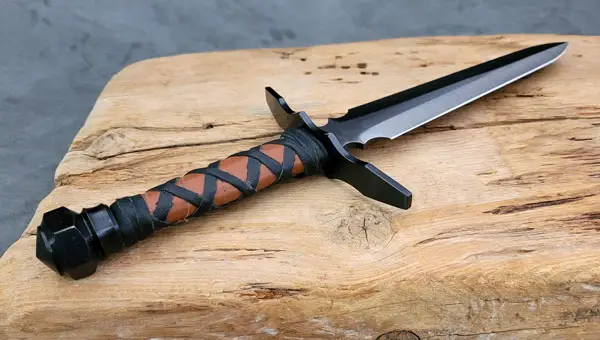
Daggers, on the other hand, were used by a variety of cultures throughout history and had a wider range of uses. They could be used for stabbing or slashing, and some even had serrated edges for sawing.
Today, dirks and daggers are still used in some martial arts practices and as collectible items. However, their practical use has diminished with the advent of modern firearms.
Some people still carry them as self-defense weapons or for hunting purposes, but this is becoming rare.
Blade Shape
The primary difference between a dagger and a dirk is their blade shape. Daggers typically have blades that are double-edged from the tip down to half or three-quarters of the way through. Each edge tapers slightly at the midpoint to form a point.
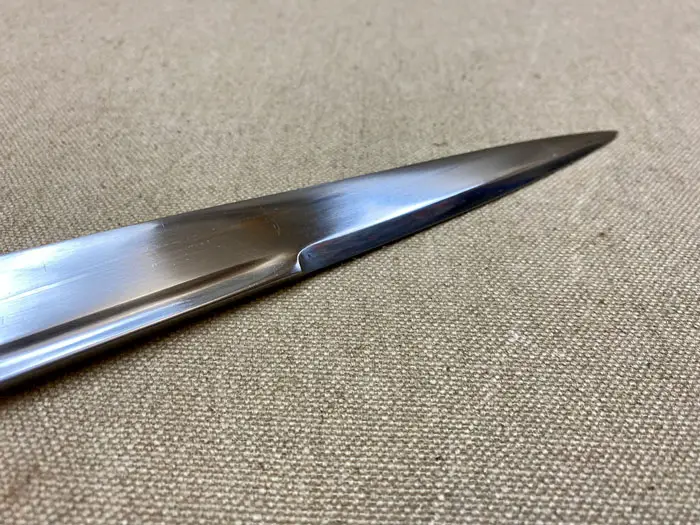
By contrast, dirks generally feature single-edged blades with a flat top near the pommel. There is also a gradual curve towards the tip, creating an upswept point at the end.
Weight and Balance
The blade shape of daggers also affects how they feel in their hand, influencing their weight and balance characteristics. They feature two edges that extend further down the body than dirks do. Daggers tend to be heavier overall, with more weight distributed away from the hilt.
That gives daggers more momentum when swinging them in combat and makes them better suited for slicing and thrusting attacks than lighter dirks.
Dirks have most of their weight concentrated near the hilt, with only minimal cross-sectional area near their tips. This makes them better suited for fast jabs rather than sweeping strikes or powerful thrusts.
History
Daggers have a long history, being used in ancient times. On the other hand, dirks were only popularized in Scotland during the late medieval period and continue to be seen as a symbol of national pride.

Historically, daggers can be found worldwide, while dirks remain firmly rooted in Scottish lore and tradition.
What Are The Advantages And Disadvantages Of Dirk And Dagger
Now that you know the main differences between a dagger and a dirk, let’s look at some of the advantages and disadvantages each one has.
Advantages Of A Dagger
- Small size: Daggers are small enough to be easily concealed, making them ideal for self-defense or hunting in tight spaces.
- Lightweight: Daggers are lightweight and easy to carry around, making them great for long trips or hikes.
- Easy to use: Daggers are relatively simple and require minimal training compared to other weapons, such as swords or spears.
- Affordable: Daggers are generally more affordable than other weapons, such as swords or spears, making them accessible to most people who want to own one.
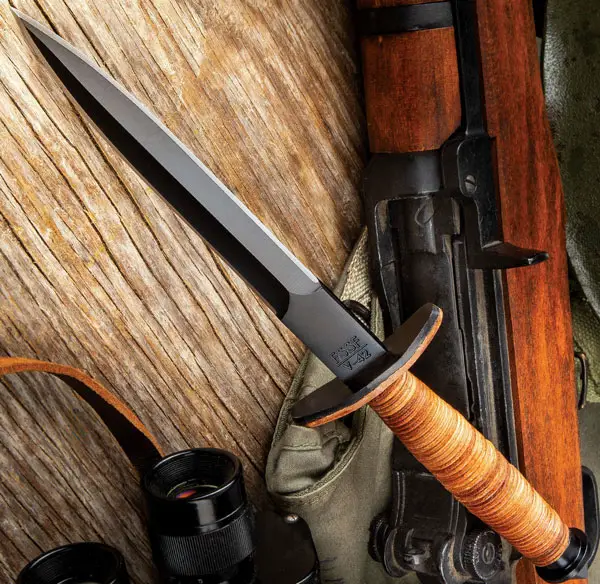
Disadvantages Of A Dagger
- Limited reach: A dagger’s small blade limits its reach. Compared to swords or dirk, shorter length make it difficult to strike an opponent who is farther away. This makes it less effective in situations where you need to keep a safe distance from your attacker.
- Easily blocked: The size of a dagger is small, making it easier for an opponent to block your attack with their weapon or shield. This reduces the dagger’s effectiveness in close combat situations, where blocking is a common practice.
Advantages Of A Dirk
- Longer reach: Dirks have longer blades than daggers. This gives them greater reach when attacking an opponent or hunting game animals. They can do this from farther away distances than with a dagger alone.
- More powerful strikes: Dirks have heavier blades than daggers. This allows them to deliver more powerful strikes against opponents or when taking down larger game animals such as deer or elk.
It also increases the effective distance of their strikes compared to those made with a dagger alone.
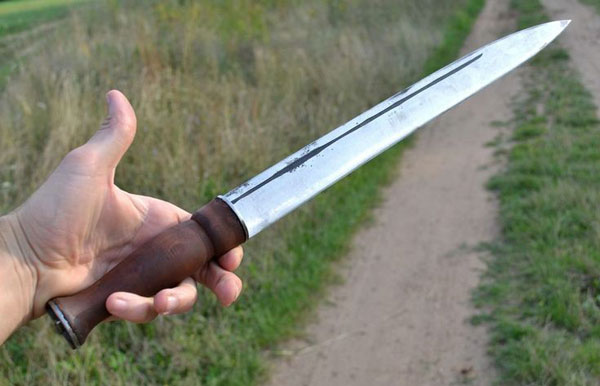
Disadvantages Of A Dirk
- Heavier weight: Dirks tend to be heavier than daggers due to their thicker blades, making them less convenient for carrying around on long trips or hikes.
- Dirks tend to cost more than daggers due to their higher quality materials and construction. This makes them less accessible for those on tighter budgets.
FAQs
Below are some frequently asked questions about daggers and dirks:
Q: Is It Legal To Carry Either Type Of Knife?
It depends on where you live, as laws vary from state to state regarding carrying knives in public places. Generally speaking, daggers and dirks may be carried legally if they meet certain criteria.
Q: What Is A Dirk Knife?
A dirk is a long-bladed knife with a single sharp edge and thicker spine than other blades. It has been traditionally worn by Highlanders in Scotland but has now become popular among knife aficionados across the globe. This is due to its distinctive design and its potential as both a tool and a weapon.
Conclusion
Daggers and dirks are both weapons that have been used for centuries. Depending on the situation, they each offer different advantages and drawbacks. A dagger is the better option if you’re looking for something lightweight and convenient to carry.
For greater reach and power, a dirk may be more suitable. Be sure to check the legalities in your area before carrying either type of knife in public places, and always use them responsibly.
